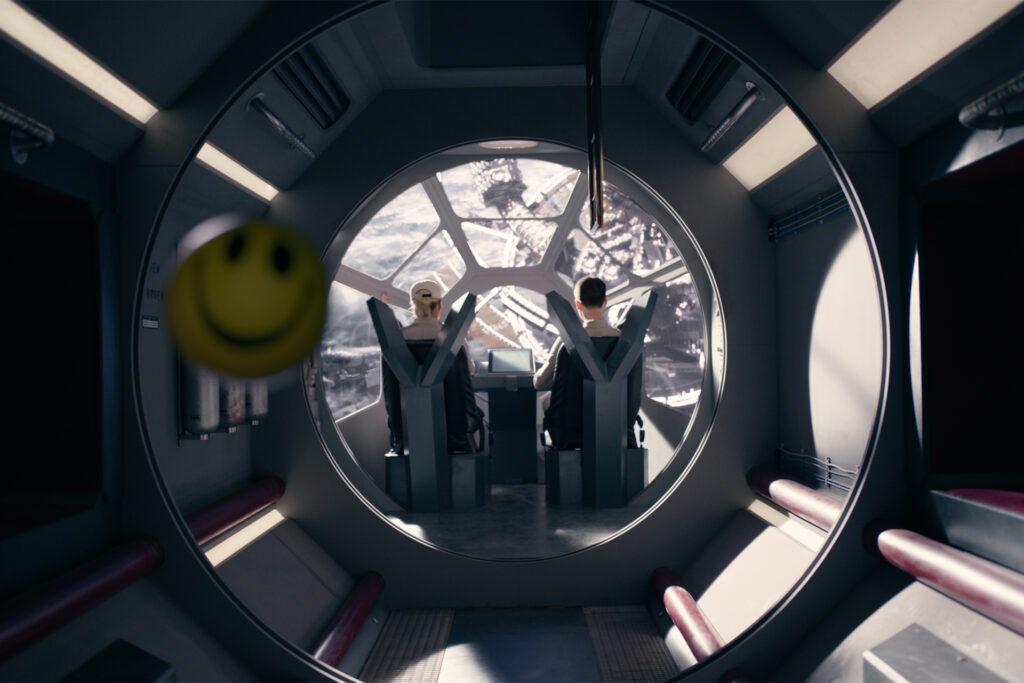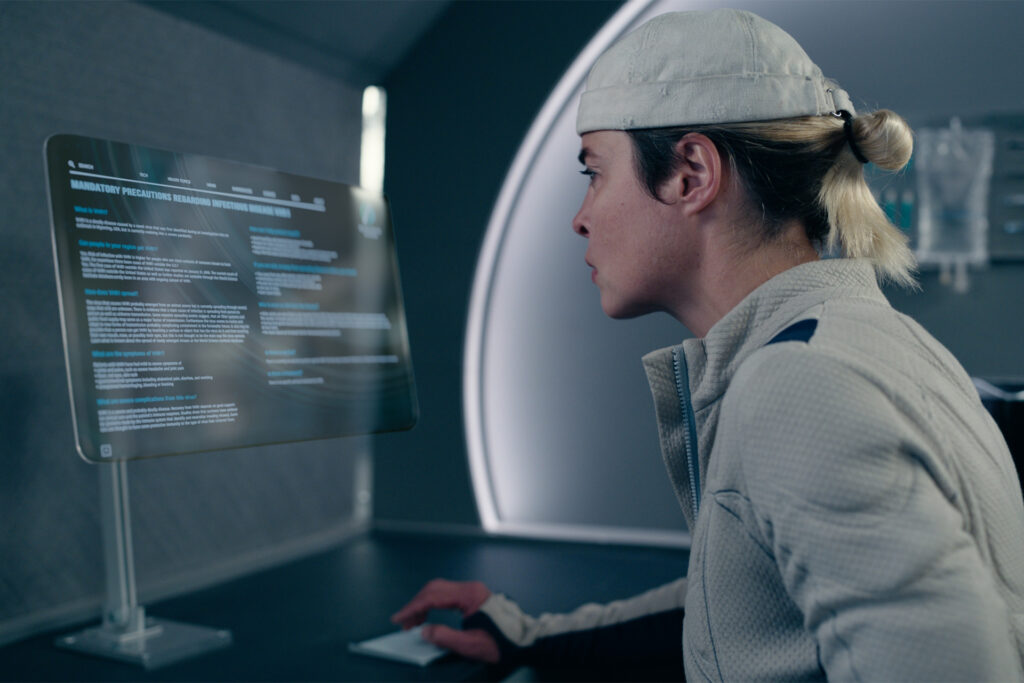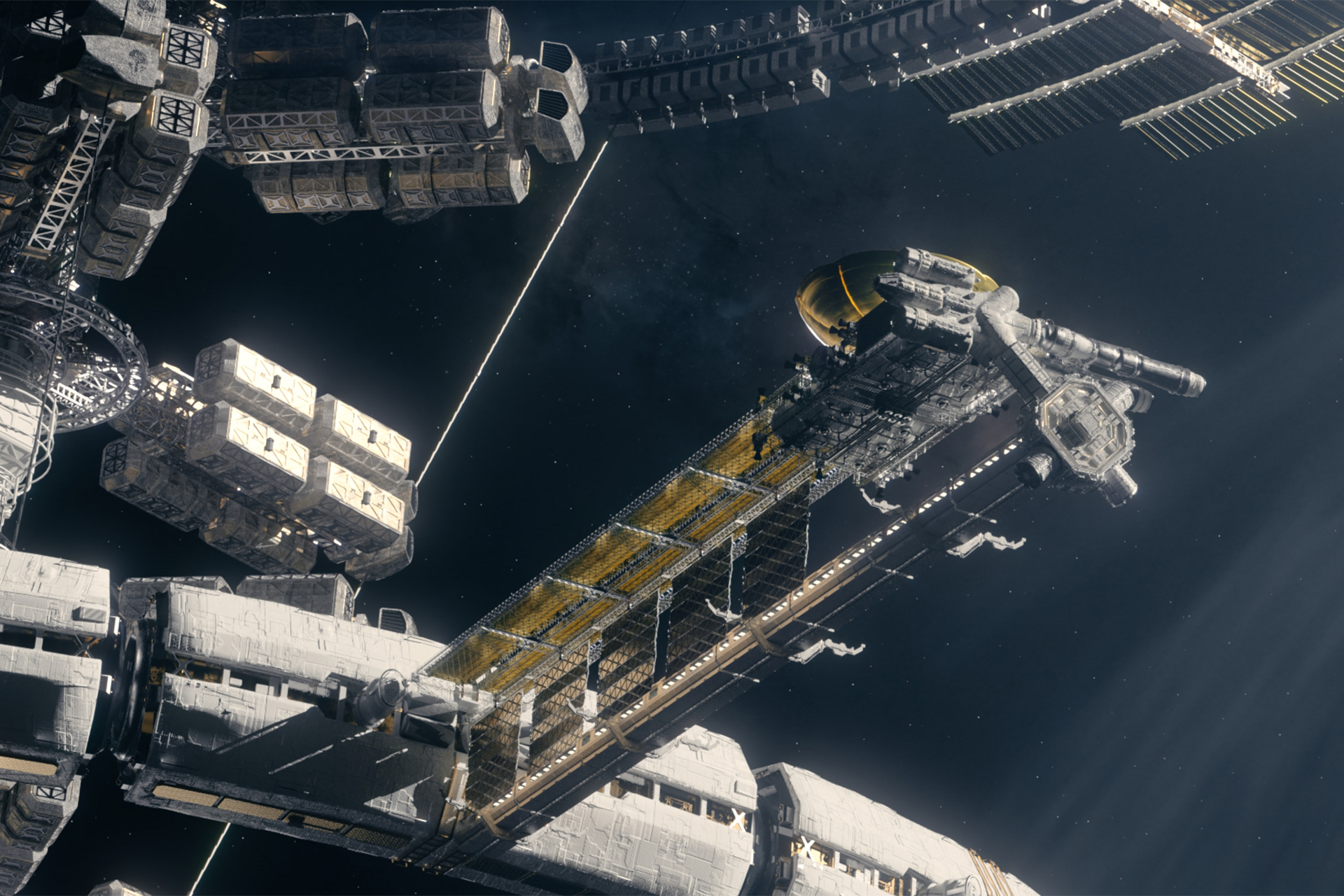Short listed for the 2023 Oscar, ALMOST HOME is a the present day topical sci-fi short film from Nils Keller explores decisions and relationships in the future on spaceship.
A interview with director Nils Keller.

A very today reference set in the future, how did you develop this storyline?
The idea for ALMOST HOME was inspired by a newspaper article I read in March 2020 about a cruise ship’s odyssey due to the mounting fear of Covid 19. What really shook me was the mention of people who, after being trapped aboard their floating steel prison for weeks and despite the prospect of finally being able to leave it, wondered if it was safer to stay. Absurd at first glance, I immediately wondered what this might say about our lifelong struggle to draw a line between safety and freedom. The idea of using certain aspects of this article and turning it into a more universal short film story that departs from Covid’s reality and takes the form of a character-driven coming-of-age drama set in space evolved over the next few days.
Almost Home, the choices and conflicts in the story, you stayed away from the good guy, bad guy, can you explain this?
In creating the film, which at its core was meant to be a metaphor for our lifelong struggle to determine the right balance between freedom and security, two things were very important to us: we wanted to ask questions, not provide answers – and in order to achieve that, we wanted to create multidimensional characters with very good but very contrary intentions. Let’s face it: life would be so much easier if it consisted mostly of circumstances where there was a clearly good and a clearly bad option. But in fact, that is rarely the case. Most of the things we must decide on are tremendously complex and become even more complicated as more people are involved in the calculation and emotions as well as individual perceptions start playing their parts. The pandemic has given us a very global and painful example of this. And in some ways ALMOST HOME draws from this confusion while intentionally moving away from Covid itself and asking more general questions about growing up, handling social conflict, sharing and taking responsibility and navigating life-changing situations where it’s hard to know what long-term consequences will arise.
Why did you decide on a sci-fi film with CGI as a project, not exactly an easy choice.
As a director, my passion goes towards these grounded yet cinematic genre films that focus on the characters and highlight their drama. I think it’s one of the most magical powers of cinema that narrative distance can pave the way to talk about essential issues in our lives that would otherwise be buried under too many strange or personal circumstances, or too hurtful to address. I also like the entertaining and world-building part of genre narratives, where you’re a little freer to tell your story. In the specific case of ALMOST HOME, the main reason for setting the story in a futuristic and isolated environment was to distance it as much as possible from Covid 19. The spaceship is meant to provide a confined cinematic stage to reflect on what it means to be dependent – on our parents or other people who try to have a saying in our life choices – and how hard it can be to break away from that while not destroying the relationship. It’s that very physical yet metaphorical expression of not being able to run or hide. I wanted to focus on our characters and their dramatic conflict and see the larger implications of life in that.
Of course, we knew from the beginning that it would be very difficult, some even said impossible, to create a no-budget sci-fi film with so many challenging elements. There was an ongoing pandemic, little money, the need to build a full-scale walkable spaceship and tons of visual effects. On the other hand, the fact that we were students offered us a unique chance for support, funding and trying things out. People tend to love these passion projects and there were so many great filmmakers and supporters helping us with almost no payment involved. Among them companies like ARRI giving us their cameras and lights for free, our film school (the University of Television and Film Munich) etc. Since DoP Georg Nikolaus and I had done some commissioned CGI projects before, we were also confident, that this could be a manageable thing. Of course, everything turned out to be much more difficult. But thanks to the great team and the hard work of everyone involved, our dream didn’t crash but started flying. And it’s an amazing honour for all of us involved to receive such great feedback now on such a high level. It really is beyond our wildest dreams.

Obviously you worked closed with a veteran cinematographer, what was the relationship?
I wouldn’t necessarily say that Georg Nikolaus is a veteran cinematographer, even if he has the calm and many impressive skills of one. I think it was very important for this project that he and I know each other since the beginning of film school. We did almost all our short films together and worked on some commissioned productions for commercials and television together. There has always been a shared understanding that story and characters must come first when we think about visual language. In the case of ALMOST HOME, we discussed the possible layout of the spaceship early on to make sure we had the right mix of a narrative stage for our story and enough opportunity to visually approach the characters and their environment in an intimate way. Further down the road, we used the 3D model of the spaceship, created by our incredible production designer Pan Patellis, to work out literally every shot, the blocking and camera movements. The spaceship was so cramped, the shooting time so short and the technical demands so advanced, that we had to exactly know where to put the camera and determine what walls and ceilings had to be disassembled for certain scenes. Yet we also often took a step back from planning and considered how to visually help express Jakob’s emotionality and his longing for Earth as it felt important to convey a human and poetic note in a cold environment like ours. Through highlighting Jakob’s personal items with their used surfaces, the presence of the earth through moving sunlight glimpses through the windows with the blue marble in sight etc. As a result, there was a lot of planning together with the art department as well. We also stayed true to the idea of letting the camera playfully float at the beginning of the film where Jakob feels free and optimistic in zero gravity. Advertently, when gravity sets in, the visual language becomes as stiff as his body. In order to emphasise the relationship between Jakob and his mother and their shifting understanding of each other, we discussed every angle, inch and trick possible inside a confined set like ours. It was of incredible help here, that ARRI Rental supported our work with their amazing equipment like the ALEXA Mini LF, lights and much more. Later in post-production, Georg continued to be an integral part of our naturally understaffed project, having ongoing conversations about the right perspectives for visual effects, dispelling, preparing the colour grading, creating screen inserts, artworks etc.
ALMOST HOME has been shortlisted for the Oscar 2023.
